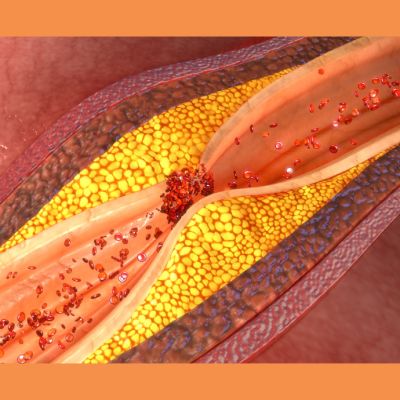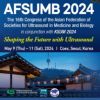A session on breast ultrasound at the 2014 Radiological Society of North America (RSNA) annual meeting in Chicago (30 November-4 December) heard from Islamiat Ego-Osuala, MD, who presented a study of the use and role of adjunct ultrasound (US) screening following implementation of the breast density notification law in New York state in January 2013. Their study had a lower cancer detection rate than previous studies, but included around twenty-five percent of women who were screened with whole breast ultrasound, but did not have dense breasts.
Their study reviewed women who underwent a handheld high resolution whole breast US exam performed by one of 11 specialised breast US technologists between 1 January 2013 and 31 March 2014. Screening mammogram and US exams were performed at a large academic institution with two satellite private practices and evaluated by one of 16 breast imaging specialist radiologists. The findings of the screening mammograms were known by the sonographer before the US exam was performed. Risk factors for breast cancer, mammographic density, final BIRADS assessment and outcomes of US and mammography exams were recorded. The follow-up rate, biopsy rates and added cancer detection rates were examined.
Results
A total of 42,341 screening mammograms were performed in 36,523 women. Of 3044 women who underwent 3167 screening adjunct US exam, 2253 (74 percent) of women had dense breasts, 1857 (61 percent) had average risk for breast cancer and 39 percent had an elevated risk of breast cancer. Of 3,167 US exams, 2614/3167 (82.5 percent) US exams were assessed as BIRADS 1 or 2, 276 (8.7 percent) as BIRADS 3, 277 (8.7 percent) as BIRADS 4 or 5. 18 biopsies were cancelled because the lesion was no longer seen or reassessed as benign. Biopsy was performed in 259 lesions, yielding 249 (96.1 percent) benign results, 5 high-risk lesions (1.9 percent) and 5 malignancies (1.9 percent). Of 10 lesions that underwent surgical excision, 7 were malignancies, 3 IDCs and 3 DCIS, yielding a PPV of 2.32 percent. Four out of seven cancers were detected in women with abnormal mammographic findings. Four out of seven malignant lesions were seen on mammography and ultrasonography; three malignant lesions were seen on US only. All three cancers detected on US only were stage 0 or 1 cancers (ER/PR (+), with a mean size of 8 mm and with a negative sentinel node biopsy. The additional cancer detection rate was 0.09 percent.
Supplemental whole breast US detects mammographically occult and node-negative cancers, although the rate in this study is much lower than previous studies. No cancers were detected in non-dense breasts, suggesting that supplemental screening US may be of no additional benefit in this group. If WBUS was performed in women with dense breast tissue only, the additional cancer detection rate would be 0.13 percent. Ego-Osuala noted that this study is the only one to their knowledge that included all patients being referred for screening US regardless of risk factors and breast density.
The low PPV of screening US in this study where most women had dense breast tissue and were average risk suggests further studies are necessary to identify the women who may benefit from this or other adjunct exams, such as breast MRI or digital tomosynthesis, said Ego-Osuala.
Claire Pillar
Managing Editor, HealthManagement
Their study reviewed women who underwent a handheld high resolution whole breast US exam performed by one of 11 specialised breast US technologists between 1 January 2013 and 31 March 2014. Screening mammogram and US exams were performed at a large academic institution with two satellite private practices and evaluated by one of 16 breast imaging specialist radiologists. The findings of the screening mammograms were known by the sonographer before the US exam was performed. Risk factors for breast cancer, mammographic density, final BIRADS assessment and outcomes of US and mammography exams were recorded. The follow-up rate, biopsy rates and added cancer detection rates were examined.
Results
A total of 42,341 screening mammograms were performed in 36,523 women. Of 3044 women who underwent 3167 screening adjunct US exam, 2253 (74 percent) of women had dense breasts, 1857 (61 percent) had average risk for breast cancer and 39 percent had an elevated risk of breast cancer. Of 3,167 US exams, 2614/3167 (82.5 percent) US exams were assessed as BIRADS 1 or 2, 276 (8.7 percent) as BIRADS 3, 277 (8.7 percent) as BIRADS 4 or 5. 18 biopsies were cancelled because the lesion was no longer seen or reassessed as benign. Biopsy was performed in 259 lesions, yielding 249 (96.1 percent) benign results, 5 high-risk lesions (1.9 percent) and 5 malignancies (1.9 percent). Of 10 lesions that underwent surgical excision, 7 were malignancies, 3 IDCs and 3 DCIS, yielding a PPV of 2.32 percent. Four out of seven cancers were detected in women with abnormal mammographic findings. Four out of seven malignant lesions were seen on mammography and ultrasonography; three malignant lesions were seen on US only. All three cancers detected on US only were stage 0 or 1 cancers (ER/PR (+), with a mean size of 8 mm and with a negative sentinel node biopsy. The additional cancer detection rate was 0.09 percent.
Supplemental whole breast US detects mammographically occult and node-negative cancers, although the rate in this study is much lower than previous studies. No cancers were detected in non-dense breasts, suggesting that supplemental screening US may be of no additional benefit in this group. If WBUS was performed in women with dense breast tissue only, the additional cancer detection rate would be 0.13 percent. Ego-Osuala noted that this study is the only one to their knowledge that included all patients being referred for screening US regardless of risk factors and breast density.
The low PPV of screening US in this study where most women had dense breast tissue and were average risk suggests further studies are necessary to identify the women who may benefit from this or other adjunct exams, such as breast MRI or digital tomosynthesis, said Ego-Osuala.
Claire Pillar
Managing Editor, HealthManagement
Latest Articles
Breast density, breast imaging, RSNA 2014, breast ultrasound, #RSNA14
A session on breast ultrasound at the 2014 Radiological Society of North America (RSNA) annual meeting in Chicago (30 November-4 December) heard from Islam...



























